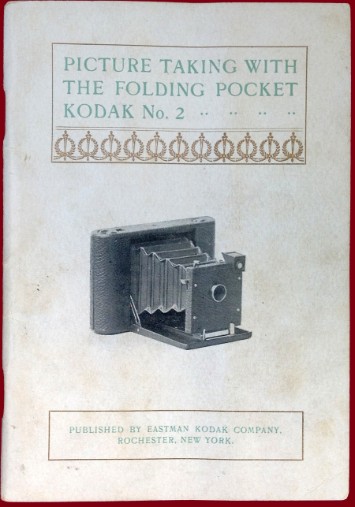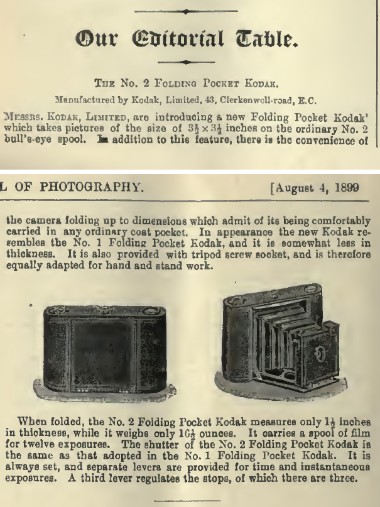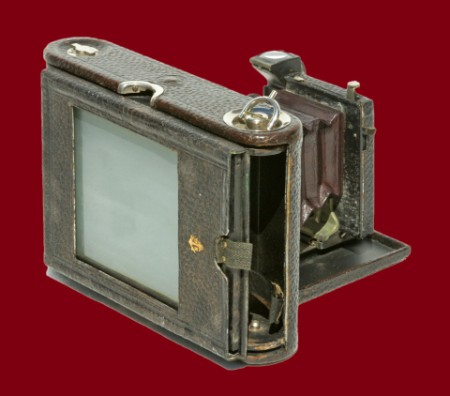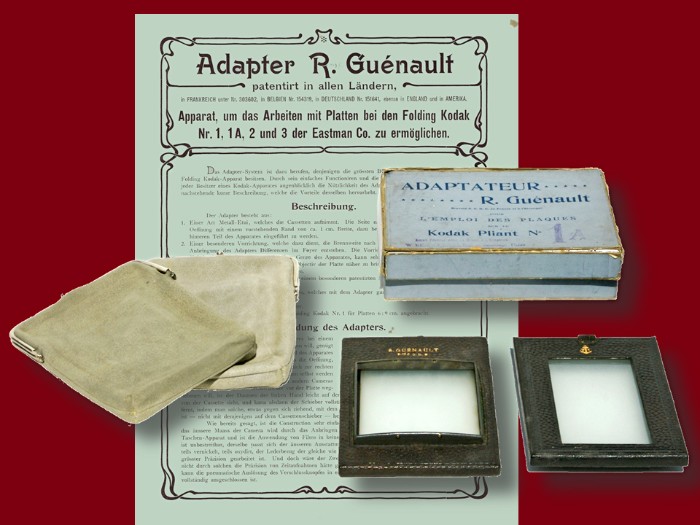 | 
| 
 
No. 2 Folding Pocket Kodak (1899) This is a typical camera for the so called family photographer, who wanted to have an easy to use apparatus to take snaps of the children, wife / husband or family dog on the porch. It is - light
- flat and easy to carry in a pocket
- easy to operate because of the simple shutter settings
- fitted with a fixed focus lens on the models from April 1899 (introduction) to May 1904
- fitted with an automatic focusing lock at 8, 25 and 100 foot positions on the models from May 1904 to April 1910 (discontinuation)
The camera took 3 1/2 x 3 1/2 inch (9 x 9 cm) photos on daylight loading film. Its price was $ 15. Over 48,000 were made. There are two major variations: - the early models have a leather covered lensboard (1899-May 1904)
- the later ones (May 1904-1909) have a wooden lensboard.
| 
Original manual
| 
Clipping from the British Journal of Photography, 1899. | 
The No. 2 Folding Pocket Kodak could be transformed into a plate camera with the help of a Guénault Adapter. The regular back was taken off the camera and the adapter was pressed onto the picture window. The adapter has a ground glass which can be taken out and replaced by a slim plate holder for one glass plate. 
Roger Guénault from Nantes received French patent 303602 on September 10, 1900, for his adapter. There were adapters for the No. 1, 1A, 2 and 3 Folding Pocket Kodaks. Each adapter was sold with its own leather purse, so it could be carried in a pocket conveniently. The advantage of the adapter was that the photographer didn't have to wait until the complete roll of film was shot before s/he could develop the negatives and see the results. The single glass plates could be developed one by one, as soon as the photo was taken. | |
 |
| |  |
|